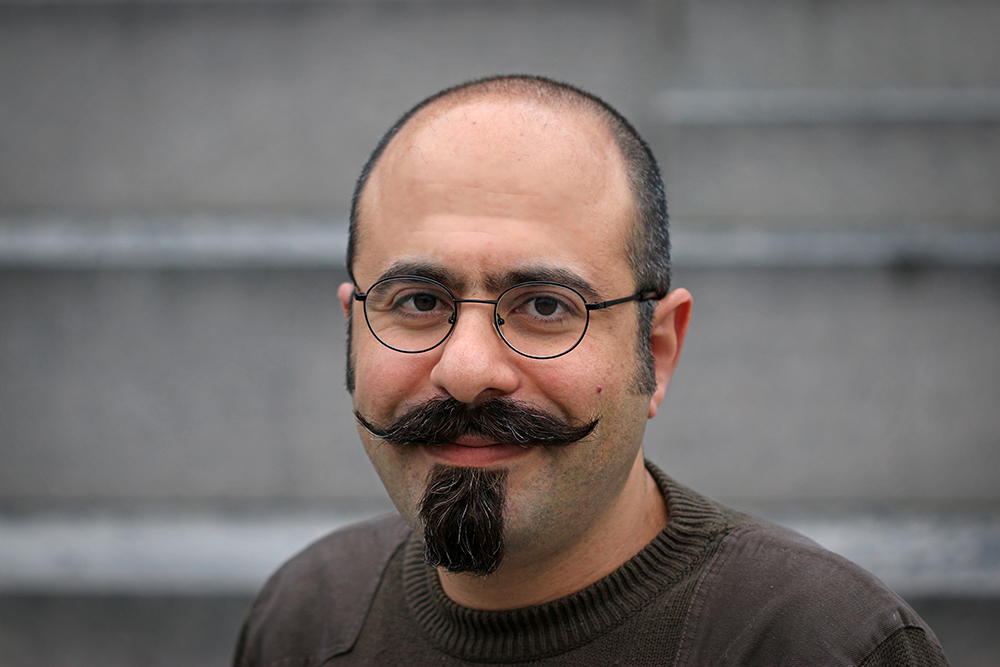Professor's portrait: Sasan Sadrizadeh

Sasan Sadrizadeh is one of the professors to be installed at the Academic Ceremony on 7 October 2022.
Sasan Sadrizadeh, professor i Computational Fluid Dynamics. School of Business Society and Engineering , Division of Sustainable Environment and Construction.
Please tell us briefly about your academic career – what choices have brought you to where you are today?
I did my PhD in fluid mechanics and indoor air quality at KTH. Then I did my first postdoctoral fellow at Aalborg University in Denmark and 2nd postdoctoral fellow at Berkeley Lab — Lawrence Berkeley National Laboratory in the US. I became a Docent at KTH, and soon after, I decided to return to Sweden, where I established my research group.
I always have been interested in science and research, and I love the academic environment. Thus, I have planned for it for a long time and acquired all requirements. However, I have also been in the right place at the right time. One should do what one can, and the opportunities will eventually find you.
Please tell us more about your research area and why you have chosen to do research within this area?
I do research on three main areas.
- Indoor air quality and health: We spend most of our time indoors, and indoor air quality plays a vital role in occupants' health and well-being. COVID pandemic has also highlighted this fact to a great extent. Respiratory diseases, among others, may impose a tremendous burden on health care settings and extend the sick leave period. Poor indoor air quality can also affect human performance and thermal comfort and is well worth investigating.
- Energy management: Climate change, energy crisis, and global warming have urged researchers around the globe to energy saving through controlling, monitoring, and conserving energy in a building and environment. I, together with my PhD students, conduct research on renewable energy integration into both district and city levels to contribute to achieving UN sustainable development goals, namely GOAL 7: Affordable and Clean Energy and GOAL 13: Climate Action.
- Medical engineering, virtual surgery, and VR: Mutual understanding between engineering and medicine is a crucial factor that can significantly improve medical practice, increase the treatment success rate and improve the patient's quality of life. My team and I conduct research on virtual surgery on the human respiratory system with interdisciplinary collaboration with top research scientists in the surgical practice field to optimize, improve and predict the outcome. We also used different visualization techniques to translate complex engineering data into easy and understandable 3D pictures.
What is the driving force in your research?
The driving force in my research is creativity and innovation. It is pure joy when my research outcome apply to the everyday life of humankind and improve their lives and when our planet becomes a better place to live. My colleagues and joyful work environment is other factors driving me to work every day.
Which research topics are particularly important for you and why?
The sustainability and health aspects of my research are essential to me. Research in the field of energy is essential because it contributes to sustainability, which is profitable in the long term. I also believe that the research we do in collaboration with the medical industry and hospitals contribute to human health and well-being and is very important to me. A healthier society means more productivity, less poverty, and higher quality of life.
How would you describe your research environment at MDU?
I am very new at MDU and didn’t experience much. However, I believe I have good colleagues and room to grow and contribute.
How do you feel about becoming a professor given that MDU has just become a new University?
I am very excited and believe I need to do my best in research to present MDU worldwide as a great university.
What's the best thing about doing research at MDU?
Work environment, freedom to do exciting projects, supportive colleagues.
